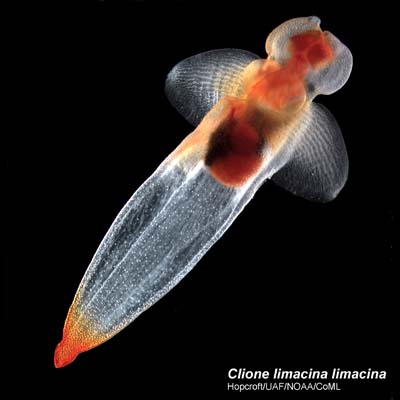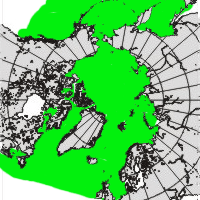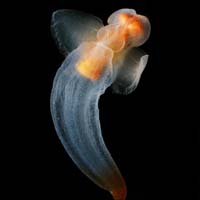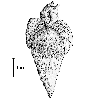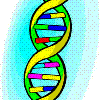Sea Angel: Clione limacina (Phipps, 1774)
The most common naked pteropod of arctic waters
Size
- larvae ~ 0.15 mm
- Adults up to 4 cm
Color & Characteristics
- Barrel-shaped body with paddle-like lateral wings
- No external gills
- Tansparent body with orange-red colouration in the tail and horn-like mouth organs
- Tentacles and hooks deployed during feeding
- Reddish-brown visceral mass is seen through the body wall
- Several subspecies and forms recognized, with differing shell shape and differeing polar/subpolar distribution
Habitat
- Panarctic, bipolar and subpolar
- Epipelagic (shallow dwelling)
Feeding
- An active swimmer while hunting for its shelled pteropod prey, primarily Limacina helicina
- Feeding apparatus consists of 3 pairs of buccal cones (finger-like tentacles), 2 clusters of long hooks, and a toothed radula (a chain-saw like tongue) all normally hidden inside the head and body
- Feeding apparatus is everted (pushed out) during feeding to extract the prey from their shells
- A well-feed animal has a large dark gut
Life cycle
- protandrous hermaphrodite (males first, females later)
- mating involves cross-fertilization
- 30-40 eggs laid as oblong gelatinous egg strips (1 to 1.2 mm long)
- Newly hatched larvae have thimble-shaped shells and a ciliated velum aroudn mouth
- shell is soon cast off and while changing to adult body form, 2 ciliated rings lost are visible mid-body and near the tail
- Generation times thought to be 1 year in the arctic and perhaps 2 per year in the subarctic
Page Author: Russ Hopcroft
Updated: Jan 23, 2010

